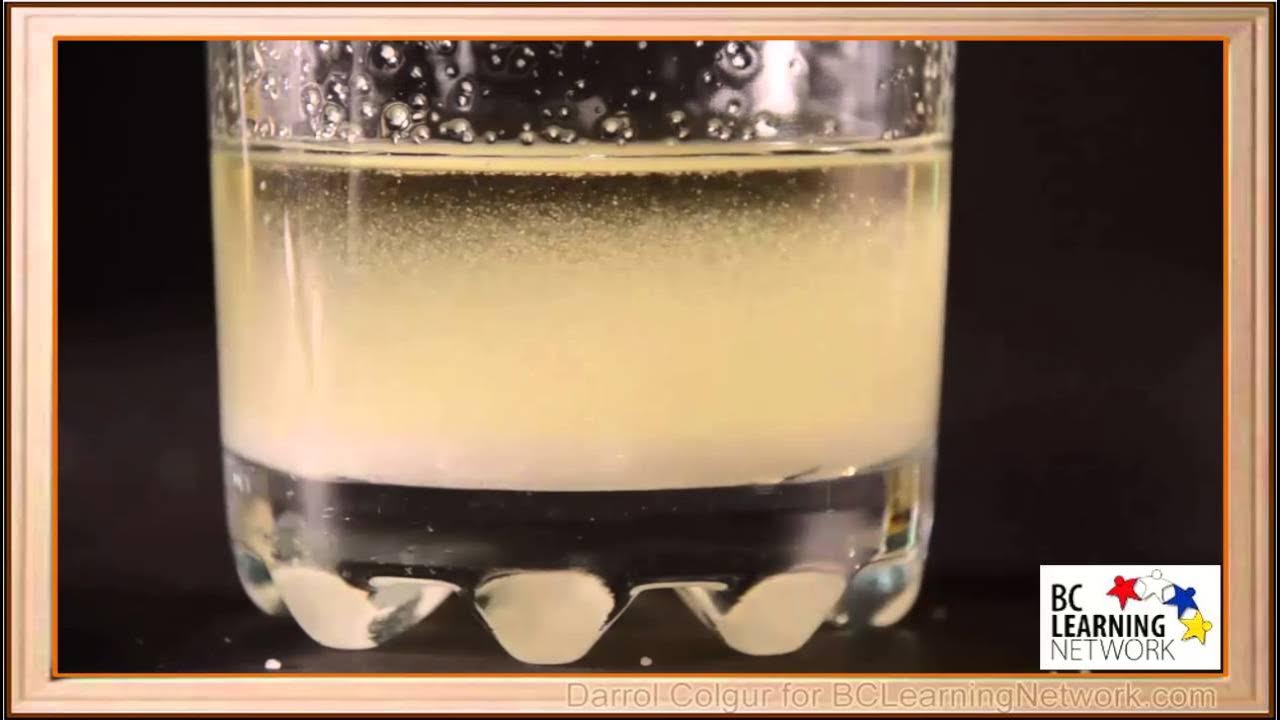MLA II 01 06 - Miscibility
Summary
TLDRThis video discusses the concepts of miscibility and solubility, focusing on the interaction between liquids, particularly oil and water. It explains how intermolecular forces determine miscibility, emphasizing the principle of 'like dissolves like.' The importance of polarity is highlighted through the aniline point, which helps assess miscibility in lubricants. The role of hygroscopic materials, surfactants, and their impact on emulsion stability is explored, along with practical implications for lubricant formulations in steam and gas turbine oils. Overall, understanding these concepts is vital for effective lubrication system design.
Takeaways
- 😀 Miscibility refers to the ability of two liquids to mix, unlike solubility, which involves solids dissolving in liquids.
- 😀 The saying 'oil and water cannot mix' illustrates the concept of miscibility due to differences in polarity and intermolecular forces.
- 😀 Liquids with comparable intermolecular forces are more likely to be miscible; for example, polar liquids mix well, while non-polar liquids do not.
- 😀 The aniline point is a measure used to determine the miscibility of lubricants, indicating how similar their polarities are.
- 😀 Increasing temperature generally enhances the miscibility of liquids by providing energy that reduces the significance of intermolecular forces.
- 😀 Polyalkylene glycols (PAGs) can attract water, making them hygroscopic, which is beneficial for certain lubricant applications.
- 😀 Interfacial tension measures the tension between two liquid layers, influencing their ability to remain mixed; higher tension promotes separation.
- 😀 Emulsifying agents, like cholesterol from egg yolks, help stabilize mixtures of oil and water by having both polar and non-polar parts.
- 😀 Emulsions, such as mayonnaise and milk, rely on emulsifying agents to keep water droplets suspended in oil, preventing separation.
- 😀 Understanding miscibility and emulsion stability is crucial for formulating lubricants and other products to meet specific operational needs.
Q & A
What is the difference between solubility and miscibility?
-Solubility refers to the ability of a solid to dissolve in a liquid, while miscibility pertains specifically to the mixing of two liquids.
Why can't oil and water mix?
-Oil and water cannot mix because water forms hydrogen bonds due to its polarity, while oil only exhibits London dispersion forces. This difference in intermolecular forces causes them to separate into distinct layers.
What does the phrase 'like dissolves like' imply in the context of miscibility?
-'Like dissolves like' suggests that substances with similar polarities are more likely to mix. For example, polar liquids mix well with other polar liquids.
What is the significance of the aniline point in lubricant formulation?
-The aniline point is the temperature at which a lubricant becomes miscible with aniline, indicating the polarity similarity between the lubricant and aniline. A lower aniline point means greater compatibility.
How do dipole interactions affect the miscibility of lubricants?
-Dipole interactions influence how polar substances, like polyalkylene glycols, attract water. This property can impact the performance of lubricants, especially in environments with moisture.
What is interfacial tension, and why is it important?
-Interfacial tension is the tension between two liquid layers. A high interfacial tension indicates a tendency for liquids to separate, while lower interfacial tension, often reduced by surfactants, promotes mixing.
What role do emulsifying agents play in oil-water mixtures?
-Emulsifying agents, or surfactants, help stabilize mixtures of oil and water by reducing interfacial tension, allowing for a stable emulsion where tiny droplets of one liquid are suspended in the other.
How do surfactants assist in creating emulsions?
-Surfactants have both polar and non-polar regions, allowing them to interact with both oil and water. They encapsulate water droplets in oil, preventing coalescence and promoting stability in the emulsion.
What are the implications of having high water content in polyalkylene glycol systems?
-Polyalkylene glycol systems are hygroscopic and can handle high water content (up to 20,000 parts per million) without negatively affecting their chemical properties, making them suitable for various lubricant applications.
How does the formulation of steam turbine oils differ from gas turbine oils?
-Steam turbine oils require excellent water separation due to the expected presence of water, while gas turbine oils may include emulsifiers for varnish control but do not prioritize demulsibility.
Outlines

This section is available to paid users only. Please upgrade to access this part.
Upgrade NowMindmap

This section is available to paid users only. Please upgrade to access this part.
Upgrade NowKeywords

This section is available to paid users only. Please upgrade to access this part.
Upgrade NowHighlights

This section is available to paid users only. Please upgrade to access this part.
Upgrade NowTranscripts

This section is available to paid users only. Please upgrade to access this part.
Upgrade NowBrowse More Related Video

BSc TESTING THE SOLUBILITY OF LIQUIDS

2-7 What affects the solubility of a substance in water? (Cambridge AS & A Level Biology)

Solute, solvent and solution | What is a Solution? | Science Video for Kids

Farmasi Fisik : Kelarutan fase dalam zat cair

12.2 The Solution Process (2/2)

WCLN - Solubility - What dissolves in what?
5.0 / 5 (0 votes)